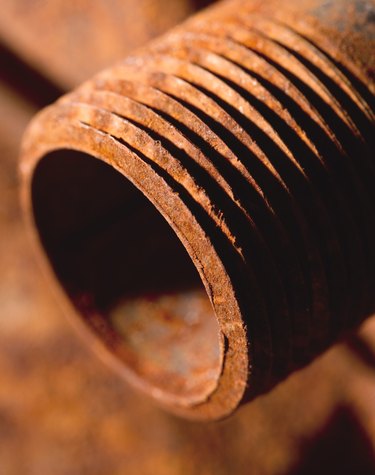Things You'll Need
Muratic Acid
Vinegar
Chemical safety gloves
Chemical/dust mask
2 buckets
water
baking soda or ammonia

Galvanized metal is treated to keep water or other materials from rusting or corroding the metal. This is an ideal material for pipes, since they are in constant contact with fluids. Zinc is used in the coating process, but it can be stripped away using a few methods. Once the zinc is stripped, you can age your galvanized pipes.
Muratic Acid Aging
Step 1
Sand your galvanized steel pipe with a sander and 150-grit sandpaper. Galvanized steel is coated in zinc to keep to from corroding and rusting. So, you must remove this protective layer in order to age the pipes.
Video of the Day
Step 2
Put on your chemical safety gloves and long-sleeve shirt.
Step 3
Pour muratic acid slowly into a noncorrosive bucket outdoors. This should always be used in a well-ventilated area.
Step 4
Put on your dust and chemical mask.
Step 5
Dip the galvanized pipe into the muratic acid making sure to fully coat all of it. Use a paint-brush to coat the pipes in the muratic acid. Leave the pipes to soak for up to an hour.
Step 6
Neutralize the acid on the pipes using baking soda or ammonia.
Step 7
Place the pipes in a second bucket, and use a water hose on low pressure to rinse away the acid.
Step 8
Sand the galvanized pipes again using the sanding grit sandpaper. Dip the pipes in the muratic acid a second time. Neutralize the acid.
Step 9
Rinse the pipes a final time to check the aging process.
Vinegar Aging
Step 1
Dip the galvanized pipes in vinegar or spread the vinegar over the pipes using a brush or spray bottle.
Step 2
Soak your galvanized pipes in it overnight
Step 3
Rinse them thoroughly with water
Video of the Day